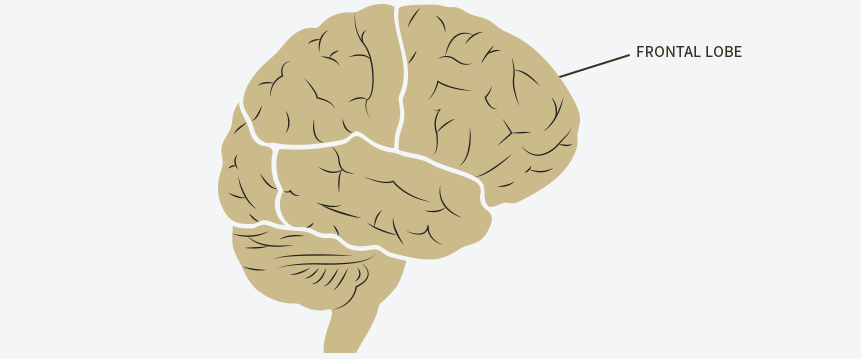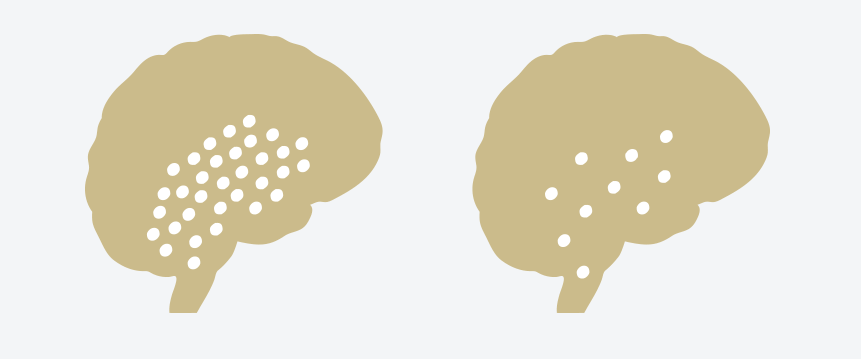There are three causes of ADHD symptoms: genetics, biology, and chemistry. Learning about these causes helps families understand that their daughter is not doing these behaviors intentionally.
Having an adolescent with ADHD can be frustrating, heartbreaking, and entertaining—sometimes all at once. She’s a smart kid, but Attention Deficit Hyperactivity Disorder, also known as ADHD, makes it hard for her to put her potential into practice. There are three causes of ADHD symptoms: genetics, biology, and chemistry. Learning about these causes can help you understand that your daughter is not doing these behaviors intentionally.
Chapter one
Genetic Causes of ADHD: It’s Not Her, It’s You
Chapter Two
Biological Causes of ADHD: The Curious Influences of the Frontal Lobe
Chapter Three
Chemical Causes of ADHD: What’s Dopamine Got to Do With It?
Chapter Four
She Has to Learn It, Not “Get It”
Chapter one
Genetic: It’s Not Her, It’s You
ADHD is not a random disorder. It is not caused by sugar, or television, or lack of discipline. Ninety percent of people with ADHD have inherited it from one or both parents. In most of these cases, more than one person in a family will have ADHD, and sometimes the whole family will have the disorder! The other ten percent with ADHD have suffered a traumatic brain injury or had an illness that affected the brain.
Chapter Two
Biological: The Curious Influences of the Frontal Lobe
You see it every day. She has a brilliant idea, but can’t seem to execute it. The creamery has ten flavors of ice cream (three of them are new!) and asking her to choose becomes an impossible choice. She’s burned her mouth with hot chocolate three times…
…in the past week.
These are all results of an underdeveloped frontal lobe. It affects her ability to plan that brilliant idea, decide which flavor of ice cream she wants, and learn from the first (or second) time she made the mistake of sipping 212-degree hot cocoa.

Children with ADHD have a frontal lobe that is developing slower than their peers’. This impacts much of their day-to-day life and includes even more than what’s mentioned above. It’s also instrumental in understanding cause-and-effect, changing habits, long-term memory, and reading social cues.
Cause-and-Effect is not an easy concept for her to grasp.
Thinking through a process (i.e., “If I take this action now, then this will happen in the future”) is simple for those without ADHD. But what happens when you ask your teenage daughter with ADHD to understand that if she starts her homework now, then she will be finished in time to watch her favorite show? It’s likely you’ll see a spectacular display of distraction for the next 90 minutes, and then witness a meltdown at 4:30 when the show starts and she can’t watch it. Cause-and-effect is not an easy concept for her to grasp. She will learn and eventually understand it on her own, but it will take patience and practice to get there.
It’s no secret that teens are inclined to experiment with substances. This can be especially challenging when an adolescent with ADHD begins to use cigarettes, drugs, or alcohol. The frontal lobe impacts a person’s ability to change from poor habits to positive habits. So, although she may not be “addicted”, it will be harder for her to discontinue use. In addition, she will also struggle with long-term memory. She can memorize information for a test the following day, but will be unable to recall that information during the final exam two months later.
Finally, the frontal lobe impacts the ability to understand social cues. Reading a room upon entering will be difficult, and she won’t think twice about announcing herself loudly in a somber room. In adolescence, social cues become more subtle and even harder to read. This can be painful to watch as she struggles to make and keep friends. She will benefit from coaching with trusted family and friends to learn how to read these complex cues.
Chapter Three
Chemical: What’s Dopamine Got to Do With It?
Did she knock over the waffle cone display at the creamery while sampling all ten flavors of ice cream? That happened because there is more going on for her than “just” slower frontal lobe development. She is also dealing with the complications of dopamine deficiency in the brain. Symptoms of low levels of dopamine include lack of coordination, shorter attention spans, and increased impulsivity.
Dopamine works in conjunction with the basal ganglia–the part of the brain that regulates movement2. Dopamine deficiency in individuals with ADHD usually results in uncoordinated movements. Common problems with coordination include difficulty with handwriting and balancing.

When dopamine levels are low, the brain is constantly looking for ways to boost them. One way the brain does this is by frequently changing tasks to experience a feeling of accomplishment2. So during a 45 minute stint of homework, your daughter may check her email multiple times, send her friend a “happy birthday” text, and write her grandmother a letter. None of these distractions help her accomplish the goal of finishing homework, but each of them sends her brain a little rush of dopamine.
That means she’s likely to do risky behaviors to increase dopamine to levels she can feel.
Dopamine is the brain’s reward center. When you eat your favorite food, for example, dopamine levels rise and you feel happy. Since this chemical is diminished in ADHD, she’s not going to feel much “reward” from her fluffer-nutter sandwich. That means she’s likely to do risky behaviors to increase dopamine to levels she can feel. If she takes a walk after dinner and twenty minutes later you glimpse her riding down the street on the neighbor’s horse, it’s not because she’s trying to cause trouble. It’s because the thought of riding this horse (and actually doing it), raised dopamine levels enough for her to feel them. And they feel good.
Chapter Four
She Has to Learn It, Not “Get It”
It can be frustrating as a parent to watch a child continue to make these mistakes, yet allowing her time is how she will learn.
Individuals with ADHD have a slower learning curve, and patience is key to helping them grow. She can’t be expected to just “get it” because her parents explained it, or because she had a relevant experience. My young son with ADHD used to stand in the street with a rake to stop traffic. My husband and I told him not to do this, but he kept doing it anyway. He was almost hit by a car, but still, he continued. It took several more reminders and even a few more near-misses by oncoming traffic for my son to learn—for himself—that stopping traffic with a rake was not in his best interest. It can be frustrating as a parent to watch a child continue to make these mistakes, yet allowing her time is how she will learn. Sometimes this process can be quick, and other times it could take months. But with every experience she is learning, and that’s what matters most.
Download The 3 Causes of ADHD — She’s Not Misbehaving, She’s Learning
Download The 3 Causes of ADHD Info Graphic
We invite you to call 888.317.3958 to learn more about how our ADHD program can help your daughter with ADHD and your family.
References
1 Mandal, MD Dr Ananya. “Dopamine Functions.” News-Medical.net. 27 Oct. 2015. Web. 20 June 2017.
2 Alban, Deane. “Dopamine Deficiency, Depression and Mental Health.” Be Brain Fit. 14 June 2017. Web. 20 June 2017.
